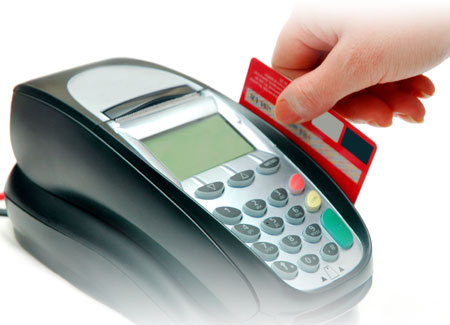 A placement on the Terminated Merchant File (TMF) list is perhaps the worst thing that can happen to your merchant, at least from a payment processing perspective. Not only does it follow a termination of your merchant account, but it also serves to put other payment processors and acquirers — who are all required to use the TMF / MATCH system — on notice that there is something seriously wrong with your business. Naturally then, it is hugely difficult for TMF-listed merchants to find a new credit card processor, on any terms. And if you can’t take credit cards for payment on your website, what do you do?
A placement on the Terminated Merchant File (TMF) list is perhaps the worst thing that can happen to your merchant, at least from a payment processing perspective. Not only does it follow a termination of your merchant account, but it also serves to put other payment processors and acquirers — who are all required to use the TMF / MATCH system — on notice that there is something seriously wrong with your business. Naturally then, it is hugely difficult for TMF-listed merchants to find a new credit card processor, on any terms. And if you can’t take credit cards for payment on your website, what do you do?
Well, fortunately for you, there are solutions for such businesses, but if you do find yourself placed on the TMF, you should immediately prepare yourself for a long and laborious climb out of the hole, for you will find no shortcuts that can be taken. What that means in practice is that you would have be completely honest about your situation with all prospective processors you talk to, implement all of the changes they request, provide all of the paperwork they ask for and arm yourself with patience, lots of it.
If you do all that, you will manage to clean up the things that got you into this mess and start accepting payment again, though initially through an offshore solution. And the best thing that will come out of it all will be that, once the ordeal is over, you will be much better prepared to manage your high risk merchant account, so that, with some luck, you won’t find yourself dealing with the same issues again.
How Does TMF Work?
The TMF / MATCH (Member Alert to Control High Risk Merchants) is national database of merchants and their owners, whose accounts have been terminated for cause. The file is maintained by the credit card networks and is based on information reported by their member banks. The TMF system was developed to help acquiring banks identify a potentially high risk merchant before entering into a merchant agreement and, should they elect to acquire that merchant’s transactions, whether to impose specific conditions with respect to acquiring.
When an acquirer does a search into the TMF database, the system looks for possible matches between the data provided in the inquiry and the following:
- Data reported and stored during the past five years.
- Other inquiries made during the past 120 days.
The acquirer who does the search can also directly contact the listing acquirer to help determine whether the merchant which is being examined is the same one that was previously reported into TMF, terminated, or inquired about within the past 120 days.
How to Survive TMF
So if your merchant account has been shut down, ask your payment processor whether or not you have been placed on the TMF list and if so, for what specific reason. Then start looking exclusively for service providers which specialize in high risk and offshore credit card processing and begin contacting them. Keep in mind that the traditional merchant account providers will no longer be able or willing to serve you, so don’t waste your time on them.
Tell the ones you do contact that you were placed on TMF and provide the paperwork they will ask for — keeping silent about the TMF thing will do you absolutely no good at all and could in fact be harmful, as the processor will inevitably find out at some later point and is likely to be unhappy that you kept such an important detail from them. At this point, a prospective processor should only need the reason for the TMF placement and your six latest processing statements, to decide whether or not your business is worth their time. And yes, if your volume is low — which usually means less than $100,000 a month — you will probably be out of luck.
Assuming you’ve passed that first hurdle successfully, you will now be asked to complete the application forms and provide much more paperwork. Do it all and supply any other information the processor may ask for. You may, and probably will, be asked to make some changes in your business practices, in order to cure the issue that caused your TMF placement — needless to say, you should comply. At this time, the underwriting review would have been initiated and the waiting game has begun.
The underwriting review will take much longer to run its course than the one you went through when you applied for your traditional merchant account (the one that was shut down) and understandably so — payment processors need to be much more cautious with applicants who have had their accounts terminated for cause by other service providers. You may feel that the process is taking much longer than could be justified, but you will still need to be patient and wait it out — there is no other way. From time to time you may be asked to provide a piece of paperwork or answer a question or two — do it promptly and let your processor continue its work.
Finally, if you did all that, your new high risk merchant account would be approved and set up and you can resume accepting credit cards. Now, while it’s perfectly acceptable to feel relieved, this is no time to relax. Your merchant account will be monitored more closely than ever before and so you will need to make certain that you are constantly in full compliance with the terms of your processing agreement. It is very probable that your new processor will be continually reviewing at least a sample of your transactions, making sure everything is the way it should be. It is also probable that you will be asked to provide invoices and other supporting transaction documentation, so make sure you have it all well organized.
A TMF placement is really a very big thing — a truth not nearly as universally acknowledged as it should be. Most merchants who find themselves on the terminated list are very slow to grasp the full gravity of the situation and usually believe that the worst thing that could happen to them would be that they’d be forced to accept a higher processing rate — possibly much higher — but that otherwise business would continue pretty much as usual. Well, it doesn’t work like that and in real life the vast majority of the TMF-ed merchants are never able to recover. However, you don’t have to be one of them and, if you follow our suggestions, you won’t be.
What Our Customers Are Saying
UniBul is ranked based on 159 user reviews.
UniBul enables American and international businesses to accept payments for the things they sell on their websites.

















